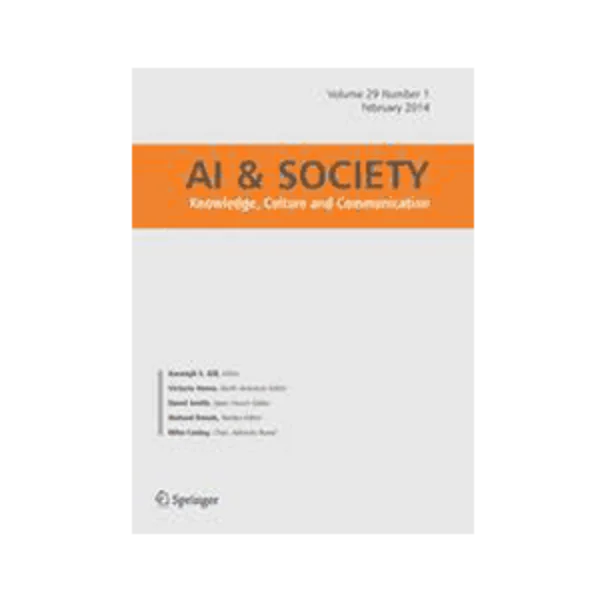-
employees’ witnessed presence in changing organisations
جزئیات بیشتر مقاله- تاریخ ارائه: 1392/07/24
- تاریخ انتشار در تی پی بین: 1392/07/24
- تعداد بازدید: 933
- تعداد پرسش و پاسخ ها: 0
- شماره تماس دبیرخانه رویداد: -
in recent years, governments, businesses and other organisations have increasingly been forced to attempt to survive by reorganising themselves fundamentally. although this happens at present on a large scale, it is not unprecedented. in fact, most organisations have had to change their working practises at some time for some reason—for example, when the competition catches up or when technology threatens to make production obsolete. the usual strategy is to fire part of the staff and to redistribute tasks. this tends to put a heavy burden on staff. they have to search for other jobs or attempt re-skilling. those remaining may face substantial changes in their relations to their managers, who will require changes … ‘or else’. the study reported in the paper focuses on people’s reactions to this approach. some employees accept and leave. others become aware of an opportunity to damage their company. others again see a way to resist and change the way the managers behave and thereby turn around the company and maintain or increase the number of jobs. the study focuses on two questions. the first is how one should model or describe the behaviour of people in the third category, i.e. those wishing to contribute. it does not seem useful to follow one’s first hunch, i.e. to search for quantifiable patterns. people’s behaviour will always be contextualised as a reaction to what managers do. this suggests the use of qualitative methods. the second question is whether the concept of presence may clarify the behaviour and identify ways for employees to contribute positively to changes in their organisations. an obstacle to answering the second question is that qualitative methods focus on people’s experiences in some context, and on the emergence of their behaviour, but do not necessarily lead to suggestions on how to behave with what effect. it is attempted to answer the second question and thereby the first question with the aim of identifying what people may do who are not immediately fired or made redundant when fundamental organisational changes are introduced. data have been collected from four companies that decided to initiate such changes in 2003–2004.
مقالات جدیدترین رویدادها
-
استفاده از تحلیل اهمیت-عملکرد در ارائه الگوی مدیریت خلاقیت سازمانی و ارائه راهکار جهت بهبود
-
بررسی تاثیر ارزش وجوه نقد مازاد بر ساختار سرمایه شرکت های پذیرفته شده در بورس اوراق بهادار تهران
-
بررسی تأثیر سطح افشای ریسک بر قرارداد بدهی شرکت های پذیرفته شده در بورس اوراق بهادار تهران
-
بررسی تأثیر رتبه بندی اعتباری مبتنی بر مدل امتیاز بازار نوظهور بر نقد شوندگی سهام با تأکید بر خصوصی سازی شرکت ها
-
تأثیر آمیخته بازاریابی پوشاک ایرانی بر تصویر ذهنی مشتری پوشاک ایرانی (هاکوپیان)
-
بهینه سازی استخراج به کمک امواج فراصوت برای ترکیبات فنولی در برگ بلوط با استفاده از طراحی آزمایش
-
تحلیل ریسک توسعه محصول جدید در صنایع خودرو سازی ایران به روش fmea
-
مقایسه پاسخ های مختلف در عیب یابی گنبدها مبتنی بر شبکه عصبی
-
مقایسه هیدروژئولوژیکی چشمه های کارستی منطقه شیمبار استان خوزستان
-
بررسی عملکرد لرزه ای قاب خمشی بتنی با بکار گیری توام میراگر و جداساز
مقالات جدیدترین ژورنال ها
-
مدیریت و بررسی افسردگی دانش آموزان دختر مقطع متوسطه دوم در دروان کرونا در شهرستان دزفول
-
مدیریت و بررسی خرد سیاسی در اندیشه ی فردوسی در ادب ایران
-
واکاوی و مدیریت توصیفی قلمدان(جاکلیدی)ضریح در موزه آستان قدس رضوی
-
بررسی تاثیر خلاقیت، دانش و انگیزه کارکنان بر پیشنهادات نوآورانه کارکنان ( مورد مطالعه: هتل های 3 و 4 ستاره استان کرمان)
-
بررسی تاثیر کیفیت سیستم های اطلاعاتی بر تصمیم گیری موفق در شرکتهای تولیدی استان اصفهان (مورد مطالعه: مدیران شرکتهای تولیدی استان اصفهان)
-
بررسی تأثیر قدرت مدیرعامل بر افشای مسئولیت اجتماعی با تأکید بر اثر تعدیل گر ساختار هیئت مدیره
-
بررسی ساختار حقوقی نظام داوری در حل و فصل اختلافات بین المللی
-
طراحی مدل ارزیابی عملکرد نظام مالیاتی کشور با رویکرد رعایت اصول اخلاقی
-
پیش بینی وقوع مرگ تا 30 روز بر اساس سن بیمار و حجم خون ریزی در عکس سی تی اسکن با استفاده از هوش مصنوعی
-
سنجش نگرش دانش آموزان راهنمایی و دبیرستانی پیرامون عوامل مؤثر بر استفاده از کتابخانه های مدارس در منطقه باوی از شهرستان اهواز




سوال خود را در مورد این مقاله مطرح نمایید :